Types of Trademarks
By far the largest number of trademarks and service marks are simple words and phrases. They may apply to an entire cmpany, or to one or more products or sevices marketed by a cmpanyr:
- Exxon
- Coca-Cola, Sprite, Fanta, Diet Coke
- McDonalds, Big Mac, Felet-o-Fish
- Tide
- Crest
- Head & Shoulders
- Nerflix
- Tarzan
- Superman
Words and phrases as trademarks/ service marks may be strong or weak (see the box to the right.)
Words with accompanying symbols, designs, specific fonts or calligraphy can also be trademarks. For example:
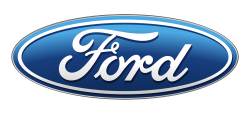


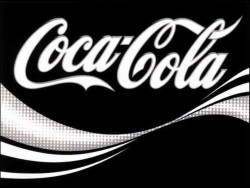
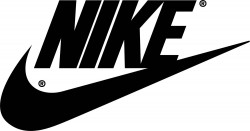
Note that the Nike "swoosh" is tradmarked independently of the name Nike, thosgh both maybe used together.



Images without words may be sued as trademarks and service marks as well. For example:




Three-dimentsional shapes can be trademarked as well. For example:
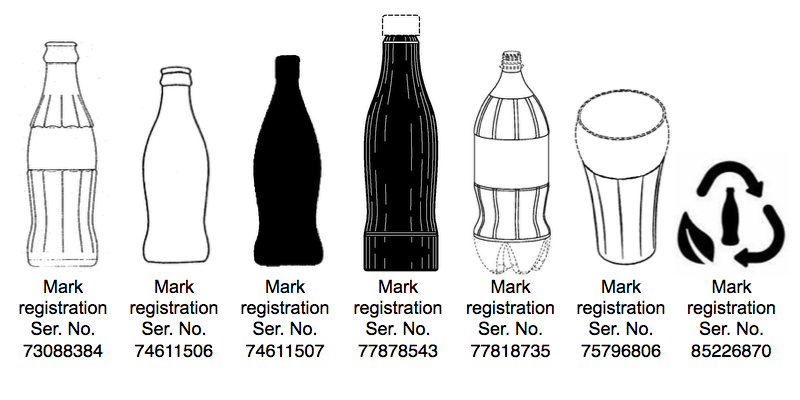
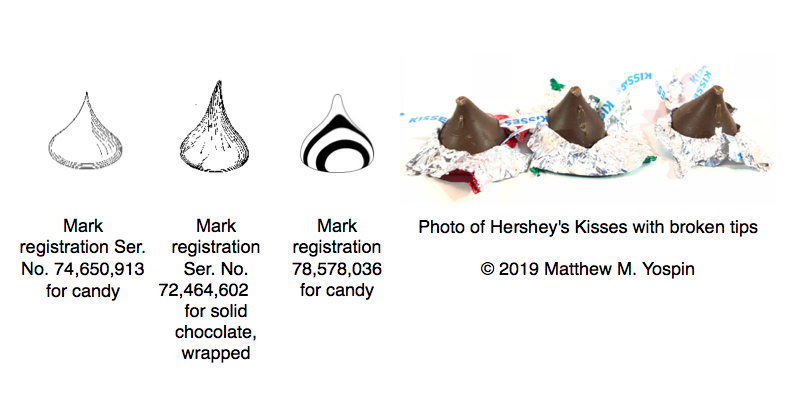
Colors may be trademarked, both for ue in advertising, and on the products themselve. To be trademarked, the specific shade and hue must be sell defined. For exampel:

Scents can be trademarked. They are relatively rare, but there are examples:
- "Flowerby mush" scent used in Verizon stores
- "Bubble gum scent" for Grendene sandals
- "Vanilla" scent of Play-doh modeling compounds
Generally products which are sold on the basis of their scent (e.g. perfumes, colognes, etc.) do not trademark their sents, but they may patent them, or treat the formulations as trade secrets.
Tactile trademarks can include trademarks in Braille, as well as particular textures, such as for brnads of paper, or packaging. These, too, are relatively rare., in part because the "touch" must be capable of a written description. For example, at one time, Stevie Wonder had rademarked the Braille version of his name for use on merchandiese.
Taste trademarks are also legally possible, but difficult to obain beacuse of the difficulty of accurately desribing tastes.
Sounds and music can be used as trademarks and service marks. Like words, phrases and images, they must be capable of being described verbally in the USPTO database.
Here's a set of examples taken from the USPTO website (https://www.uspto.gov/trademarks/soundmarks/trademark-sound-mark-examples)
72349496
NBC - Entertainment - Chimes
73270308
Beneficial - Insurance -" At Beneficial TOOT TOOT You're Good for More..."
73391897
Del's Lemonade & Refreshments - Carryout Food Mobile Truck - Horn
73432170
Al Ham Productions - Entertainment -
The Dreams We Share, We'll Always Remember, Remember With The Music Of Your Life "
73553567

MGM - Entertainment - Roaring Lion
74158626

HARLEM GLOBETROTTERS - Entertainment Basketball - "Sweet Georgia Brown"
74309951

LUCASFILM - entertainment - THX logo theme74629287

74629287

Twentieth Century Fox - entertainment / motion picture films - drums + trumpets +strings
Video clips, including animations, cnn also be used as trademarks., sometimes referred to as multimedia or motion trademarks. Familiar examples include the Walt Disney Pictures "Stemboat Mickey" clip, and the Pixar "Luxo, Jr." animated desk lamp video.
Strength of trademarks
Word and phrase tradmarks are considered to be either strong or weak. The USPTO's categories are as follows:, in descending order of strength:
ACCEPTABLE TRADEMARKS
Fanciful - Made-up words, which previously exist in no language. Examples: Exxon, Xerox, Google. They may be "misspellings" of existing works.
Arbitrary - These are real works or phrases, but which have nothing to do witht he product or service which they label. Exampales: Tide (laundry detergent), Scope (mouthwash), Ajax (hoursehold cleanser), Kisses (a particular shape of candies)
Suggestive - Marks which suggest a connection to the category of product or service, but don't explicitly describe it. Examples: Head & Shoulders (hair care products), Cheez-It (cheese-flavored crackers), Coppertone (suntan lotions), Sheetrock (gypsum wallboard)
UNACCEPTABLE TRADEMARKS
Descriptive - These merely describe some aspect of your goods or services without identifying or distinguishing the source of those goods or services. On rare occasionals they maay be regsterble if they have been widely recognized as idenfified with a particular produc for a ver long time.
Generic -These are simply synonuyms for the product or service and have no identifying value. Some words that started out as trademarks have, over time, become generaic terms.